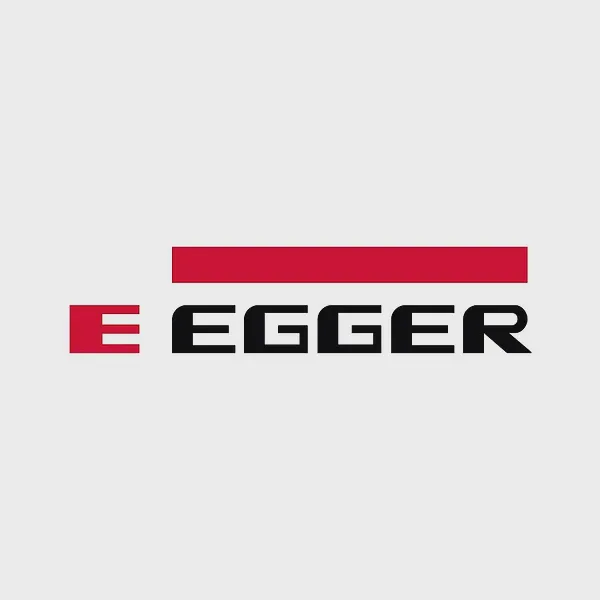EGGER, in brief: products and EPD coverage
EGGER is a global wood‑based materials brand that shows up in a lot of specs, from raw boards to glossy decor. If your team sells into interiors, shopfitting, or light-structure jobs, it pays to know where EGGER already has Environmental Product Declarations and where coverage could be tightened to win more carbon‑conscious bids.


Who EGGER is, and where they play
EGGER makes wood‑based materials for furniture, interior fit‑out, flooring, and building products. Think raw particleboard and MDF, melamine‑faced boards, laminates, laminate flooring, OSB and specialty fiberboards, plus sawmill products. It is not a pure play in one product, it competes across several adjacent ranges that often land in the same project package.
In SKU terms, the offer runs into the hundreds across thicknesses, formats, surfaces, and decors. That breadth is why specifiers encounter EGGER in offices, retail, hospitality, education, and healthcare fit‑outs.
EPDs you can already download
EGGER’s product‑transparency page lists current EPD PDFs for the big hitters, including Raw Particleboards, Decorative MDF, Eurodekor decorative particleboards, Laminate, Laminate Flooring, OSB, DHF wood fiberboard, PerfectSense lacquered boards, and Sawn Timber Dried. You can find them in the company’s product transparency section (see the EGGER product transparency page).
These are typically EN 15804 EPDs published through European operators and recognized internationally, which aligns with how many global design teams work.
How complete is the coverage
For core panels and surfaces, coverage is strong. OSB, MDF, particleboard, laminate, and several decor families are represented with product‑specific EPDs. That ticks the box for most interiors and flooring scopes where a verified declaration removes default penalties in project carbon tallies.
Two likely gap areas are worth a look. First, accessories like ABS edging may not always have stand‑alone EPDs, even though they show up in the same schedules as boards. Second, for North American projects, some owners and tools filter for EPDs verified under a U.S. program or ISO 21930 framing. Peers have leaned into that route. Roseburg, for example, announced updated UL Solutions‑verified EPDs in September 2025 for multiple wood products, including MDF (Roseburg, 2025). Industry‑wide EPDs for particleboard and MDF were also updated by the Composite Panel Association in March 2024 and are valid for five years, which keeps them visible in submittal workflows (CPA, 2024).
Why this matters commercially
When a project team cannot locate a product‑specific EPD, they often apply conservative defaults, which can nudge a material out of consideration even if price and performance fit. With a current, third‑party verified EPD, your product shows up cleanly in takeoffs and carbon models, so you compete on value, not just price. IBU’s database alone hosts over 1,800 published EPDs, so the format is familiar to reviewers and LEED consultants who check submittals every day (IBU, 2025).
A quick read on EGGER’s competitive set
In interiors and casework, EGGER frequently meets Arauco, Roseburg, Uniboard and Tafisa across particleboard, MDF, and TFL. In European projects, expect Kronospan, Swiss Krono, Pfleiderer, Finsa and Sonae Arauco in similar roles. In some specs, HPL specialists like Formica or Wilsonart are also considered as surface alternatives.
- Competitors you will most often see: Arauco, Roseburg, Uniboard, Tafisa, Kronospan, Swiss Krono, Pfleiderer, Finsa, Sonae Arauco.
If a best seller lacks an EPD, what happens
Take a workhorse like raw particleboard for office casework. If a project filters for North‑American program EPDs or ISO 21930 documents, the shortlist will likely surface peers with UL or ASTM‑verified declarations first. That does not always exclude EN 15804 EPDs, yet it can slow approval and add questions during submittals. The result is avoidable friction, and sometimes a swap late in design. A targeted EPD for the North America‑made variant usually pays back quickly in won scopes, because it removes debate and makes the estimator’s job easy.
Practical next steps for EGGER‑style portfolios
Start with a portfolio map that groups SKUs by the same background data set, then prioritize high‑volume lines that show up in multi‑trade packages. Check the prevailing PCR used by competitors in the same bids, since alignment accelerates acceptance. Bundle submissions where possible to reduce operator fees, and align data pull across plants to keep refreshes painless. You dont need to specifiy every micro‑variant on day one, focus on the families that get scheduled most often.
Where teams still get stuck
Data assembly is the heavy lift, not the modeling. Utilities by line, resin recipes by run, recycled content streams, and plant‑specific logistics are what drag timelines. A partner who takes on the data wrangling while letting engineering and plant teams stay focused on production is what actually protects schedules.
Closing thought
EGGER already covers many of the SKUs that drive interiors and flooring work with EPDs, and that coverage earns attention on modern projects. The biggest upside is tightening North American visibility for the boards and TFL that dominate casework packages, then keeping renewals on a rhythm so they never become a last‑minute fire drill. That turns EPDs from paperwork into placement power.
Frequently Asked Questions
Does IBU recognition help in the U.S.?
Yes, EN 15804 EPDs from IBU are widely recognized. Some owners still prefer UL or ISO 21930 framing for North American tools, so having both routes in play can speed approvals.
How many EGGER product families have EPDs today?
Public listings show EPDs for OSB, DHF, raw particleboard, MDF, decorative particleboard, laminate, laminate flooring, PerfectSense lacquered boards, and sawn timber. Exact counts shift as documents renew, so review EGGER’s transparency page before submittals.
If we cannot find a product‑specific EPD, can we use an industry‑wide one?
Often yes. CPA’s industry‑wide EPDs for particleboard and MDF were updated in March 2024 and are valid for five years, which keeps them acceptable in many programs (CPA, 2024). Product‑specific EPDs still earn more credit in systems like LEED.
